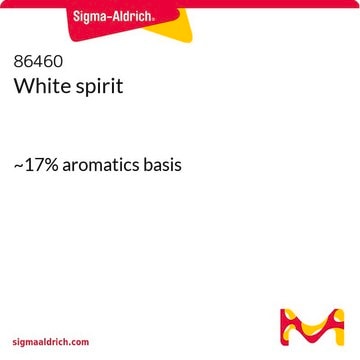31277
Cobalt(II) chloride hexahydrate
puriss. p.a., ACS reagent, reag. Ph. Eur., 98-102%
Sinonimo/i:
Cobaltous chloride hexahydrate
About This Item
Prodotti consigliati
Grado
ACS reagent
puriss. p.a.
agenzia
reag. Ph. Eur.
Tensione di vapore
40 mmHg ( 0 °C)
Saggio
98-102%
Forma fisica
solid
Impurezze
≤0.01% water-insoluble matter
Anioni in tracce
nitrate (NO3-): ≤100 mg/kg
sulfate (SO42-): ≤50 mg/kg
Cationi in tracce
Ca: ≤50 mg/kg
Cu: ≤20 mg/kg
Fe: ≤50 mg/kg
K: ≤50 mg/kg
Mg: ≤10 mg/kg
Mn: ≤50 mg/kg
Na: ≤100 mg/kg
Ni: ≤500 mg/kg
Pb: ≤5 mg/kg
Zn: ≤25 mg/kg
Stringa SMILE
O.O.O.O.O.O.Cl[Co]Cl
InChI
1S/2ClH.Co.6H2O/h2*1H;;6*1H2/q;;+2;;;;;;/p-2
GFHNAMRJFCEERV-UHFFFAOYSA-L
Cerchi prodotti simili? Visita Guida al confronto tra prodotti
Categorie correlate
Descrizione generale
Applicazioni
- To convert various aldoximes into corresponding nitriles in the presence of an inorganic base.
- To prepare organic-inorganic polyvinylidene fluoride nanofiber composites (PVDF/CoCl2) for the production of pure hydrogen production from NaBH4.
It can also be used as a cobalt precursor to synthesize nickel-cobalt-based binary metal phosphide (NiCoP) hollow spheres, which are used for electrocatalysis and energy storage (supercapacitor) applications.
Avvertenze
Danger
Indicazioni di pericolo
Consigli di prudenza
Classi di pericolo
Acute Tox. 4 Oral - Aquatic Acute 1 - Aquatic Chronic 1 - Carc. 1B Inhalation - Eye Dam. 1 - Muta. 2 - Repr. 1B - Resp. Sens. 1 - Skin Sens. 1
Codice della classe di stoccaggio
6.1D - Non-combustible acute toxic Cat.3 / toxic hazardous materials or hazardous materials causing chronic effects
Classe di pericolosità dell'acqua (WGK)
WGK 3
Punto d’infiammabilità (°F)
Not applicable
Punto d’infiammabilità (°C)
Not applicable
Certificati d'analisi (COA)
Cerca il Certificati d'analisi (COA) digitando il numero di lotto/batch corrispondente. I numeri di lotto o di batch sono stampati sull'etichetta dei prodotti dopo la parola ‘Lotto’ o ‘Batch’.
Possiedi già questo prodotto?
I documenti relativi ai prodotti acquistati recentemente sono disponibili nell’Archivio dei documenti.
I clienti hanno visto anche
Il team dei nostri ricercatori vanta grande esperienza in tutte le aree della ricerca quali Life Science, scienza dei materiali, sintesi chimica, cromatografia, discipline analitiche, ecc..
Contatta l'Assistenza Tecnica.








